- Home
- Speech Therapy
- Language Cards for Autism
Language Cards for Autism: How to Use Them for Language Therapy
Language cards for autism are an inexpensive, useful tool for teaching basic concepts. Here is a quick guide on ways to use them for language therapy.
Patch Products has a series of cards that I really like. They are nice and big (5 1/2” x 6”), made of quality cardstock, and come in a handy tin box.
Here are some types that they offer.
Action Language Cards
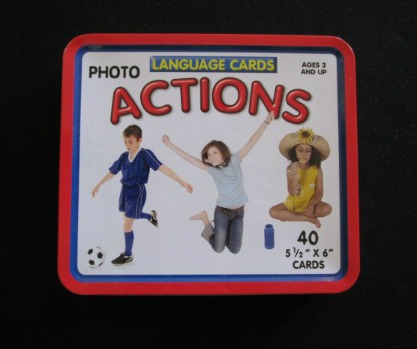
Each card shows a picture of someone performing an action. The object is for the learner to identify the correct action or verb. Or if the children are more advanced, they can respond with a sentence that tells what the person in the picture is doing.
Depending on their abilities, they may need a lot of help with this.
Here are some techniques that we have tried. You might need to vary your approach to suit your child’s needs.
1.Depending on your child’s abilities, you may wish to start with asking them to name the correct verb. You simply ask what the person in the picture is doing, and they give you a one-word response.
2. It may help to have them “fill in the blank.” For example, you might say, “What is he doing? He is __________________.” And let them complete the sentence.
3. Give them the appropriate feedback. After they have given you a one-word answer, say, “That’s right! She’s singing.” (Or whatever the person is doing.) If they give you a wrong answer, say, for example, “That’s a great try. But he’s not laughing. He’s crying.”
4. Whenever you feel they are ready for a bigger challenge, you can ask them for a sentence telling what is happening in the picture. First give them a chance to come up with the sentence. If they’re unable to do this, you could help them with each word: “She (now let them repeat) is (let them repeat) reading (let them repeat).” I find it helpful to have my son name the verb, and then work on saying the sentence.
5. Once you think they are ready for the next step, you could encourage them to give you a sentence with more information. Example: “She is reading a book.”
6. If your child is nonverbal, you could write two choices down, one correct and one incorrect. Then ask them to point to the correct answer. If they don’t know how to point, take their hand and help them point. Assist them with this a few times until they know what to do.
7. As I indicated earlier, try to give them a chance to respond each time before you give the answer.
8. Try to avoid taking them to any level that will frustrate them. You don’t want to overwhelm them with more than they can handle. The goal is to give them just enough challenge to help them learn and make progress.
Category Cards
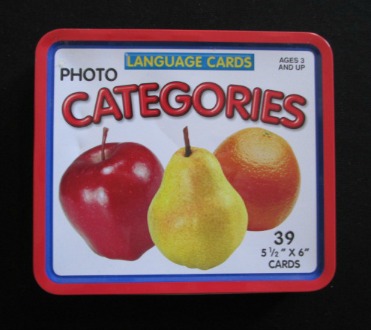
The purpose of these language cards is to categorize animals, food, toys, hats, shoes, dishes and musical instruments.
- Write the names of two of the categories (ex.: food, toys) on a dry-erase board.
- Hold up each card, one at a time, and ask them, “What is this?” Then they place the card in the category where they think it belongs.
- Correct their answers as needed, and use praise when appropriate.
As you can see in the image below, the cards in this set are well done and the pictures are easy to identify.
But if you wish, you could also make your own category cards with magazine cutouts, and laminate them.
Trying these alternatives would be a great idea if you want to talk about other categories besides what is included in the Patch Products deck.
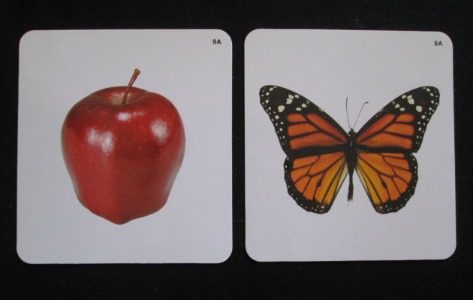 Category cards pictures are clear and realistic. Some children with autism find it hard to identify unrealistic pictures.
Category cards pictures are clear and realistic. Some children with autism find it hard to identify unrealistic pictures.Manners Cards
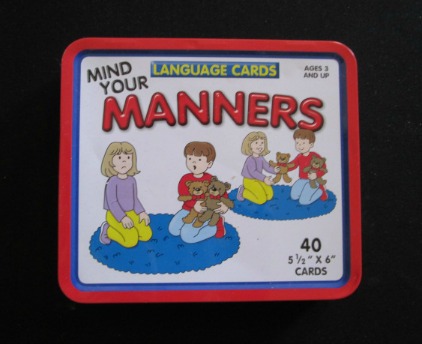
We like to flip through these language cards and talk about which manners are appropriate and which are not. The way to make these rules of etiquette more real for them would be to generalize these concepts after talking about them.
One way to do this would be to talk about manners when they come up. For instance, suppose I want my son to hold the door open for his grandmother when we're visiting her at the retirement center. I can remind him of the manners card appropriate for this situation as shown below.
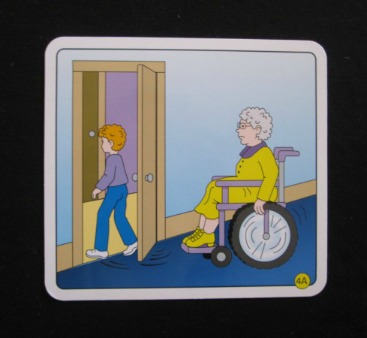 |
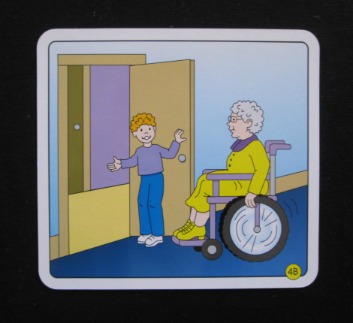 |
Opposite Cards
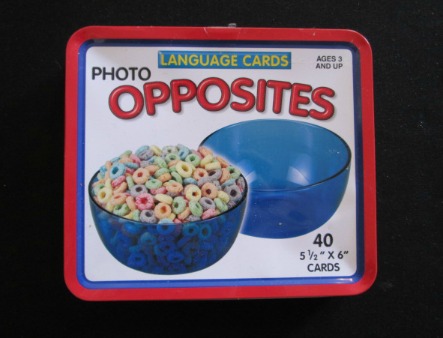
Opposite cards can work in a similar way. I like to go through that deck of cards and talk about concepts such as tall and short, thick and thin, up and down, etc.
You can reinforce these concepts by pointing out these opposites around the house, at the store, and in other places.
Once you've done this, you can then see if they understand the concept by asking them, "Which one is thick? Which one is thin?" If they don’t know, give them more examples with the correct answers and later test again to see if they have learned the concept.
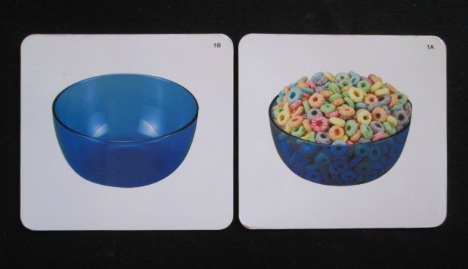 Opposites in this set include empty/full, thick/thin, in/out, on/off and many more.
Opposites in this set include empty/full, thick/thin, in/out, on/off and many more.Many Ways to Use Language Cards for Autism
The instructions included with each set of cards give you more activities to try. And I’m sure you could probably come up with other ideas as well.
You can get the Patch Products brand of cards online at www.patchproducts.com. And there are other brands out there as well.
If you have an iPad, take note that there are language card apps available online as well.
I hope you’ll find language cards for autism to be as useful for you as they have been for us.
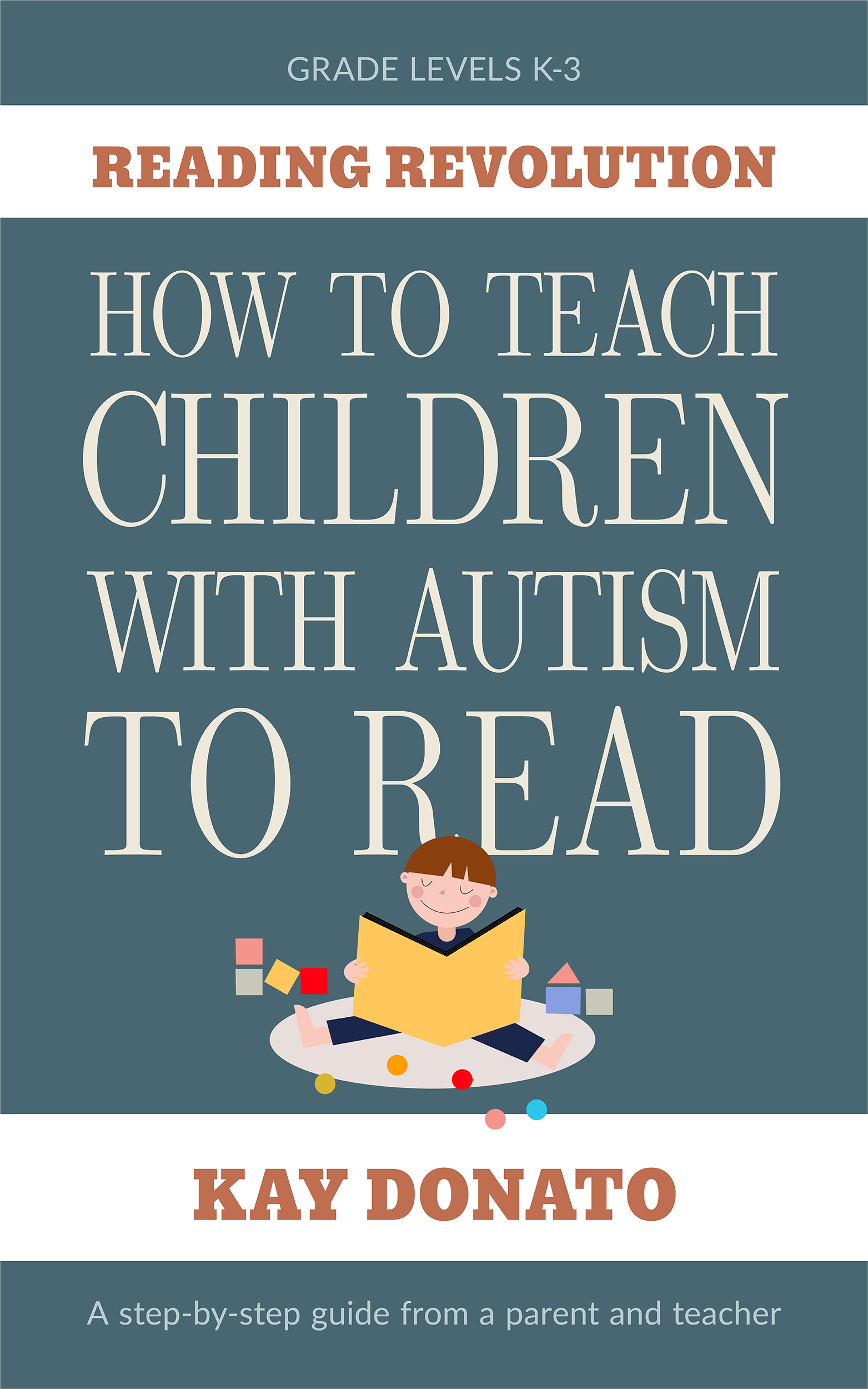



New! Comments
Have your say about what you just read! Leave me a comment in the box below.